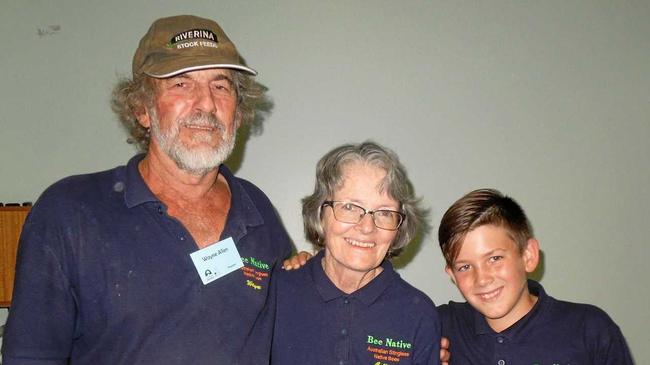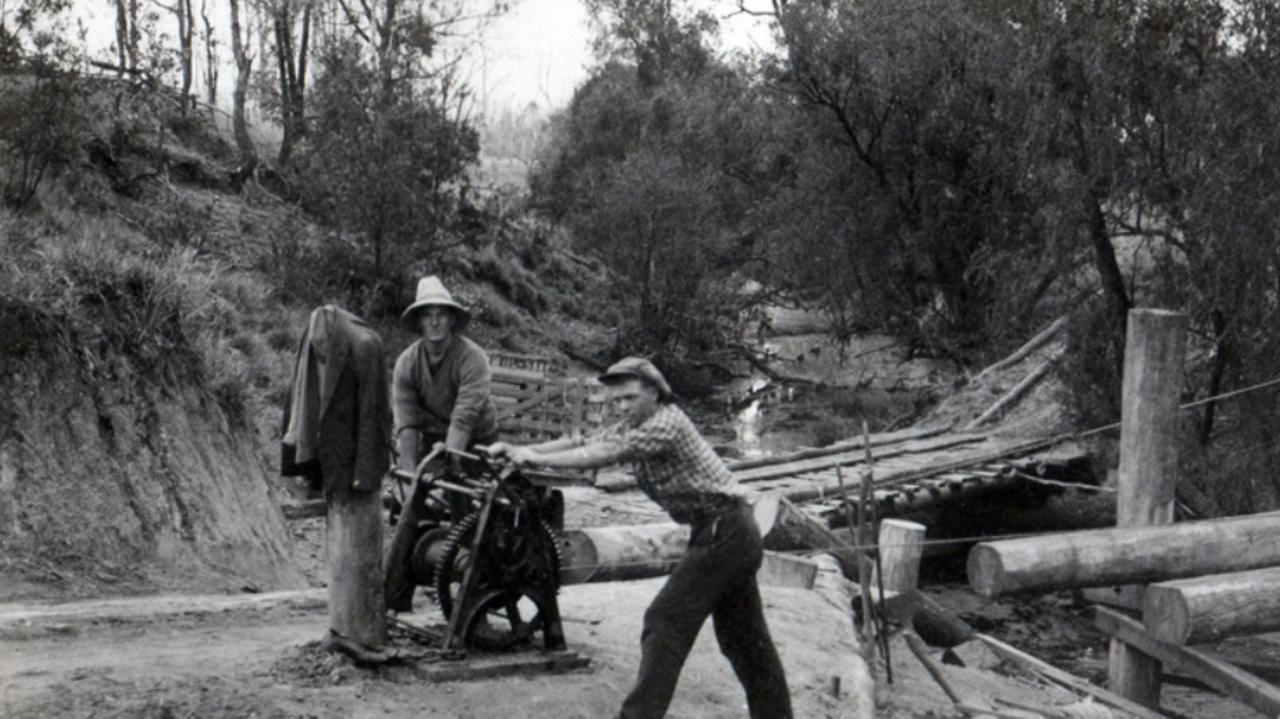A quick guide to native bees
THE Central Burnett Landcare group was given a fascinating insight into the bee-keeping industry that many take for granted.

Community News
Don't miss out on the headlines from Community News. Followed categories will be added to My News.
THE Central Burnett Landcare group was given a fascinating insight into the bee-keeping industry that many take for granted.
Project officer Marion Denholm said they were very surprised at the response with almost 60 people attending.
"There is obviously a lot of interest in keeping bees,” she said.
"Some of the participants have been bee-keeping themselves for many years while some, like myself, knew nothing at all but wanted to see if bees have the potential to be a source of income.”
The speakers for the day were Wayne Allen, ably assisted by his wife Colleen and grandson Coby.
Wayne lives at Mt Perry and has been keeping native bees for more than 50 years.
He is still learning about how best to breed and handle them, through experimenting constantly.
The other speakers were Melissa and Stephen Roth, who currently live and work mainly in Brisbane, but have a property near Eidsvold that they are slowly developing. Melissa became interested in European honey bees many years ago, but has only been keeping and breeding them for the past two years.
Mr Allen explained how to find hives of native bees in the wild.
"They prefer old, dead trees with hollow centres and very small holes or cracks that can serve as an entrance for the tiny bees, but will not let larger predators into the hive.”
He said that native bees built their hives vertically and stored honey in the top layers.
"You must be very careful when removing hives from logs or trees, to remove the top honey-bearing layers of the hive and just shift the lower part of the hive (called the brood hive) where the queen bee lives and the baby bees are located, into a purpose-built hive box. If the entire hive is shifted, the structure of top layers may collapse, drowning the bees in their own honey.”
Wayne showed the audience the type of hive boxes that are available for native bees, including some he has made himself.
"There is no standard size or type,” he said, "so it is best to either make your own boxes, or buy from a single maker, so that all your hive parts are interchangeable, instead of being different sizes.”
Melissa Roth said that bee-keeping was a family affair for her, with husband Stephen and their son also involved. She told the group that bee-keeping had been around for thousands of years, with honey found in some ancient Egyptian tombs.
"Pure honey does not spoil, so will last virtually indefinitely if kept in the correct conditions.”
Melissa began bee-keeping with a "nucleus” hive, that is a small corflute box which will hold three or four frames. From there, they have expanded to eight full-size hives, which are kept on a property at Samford in Brisbane.
"Like all livestock, bees keep reproducing and will soon get crowded in a hive box. Half of the hive must then be carefully removed to a new box. Just like native bees, European bees build honey cells above the brood on each frame in a hive box. When the frame is shifted to a new box, there is the potential that the honey cells will collapse and drown the baby bees below.”
Wayne explained that splitting native hives was quite difficult.
"It's much easier to do an 'induction', that is, placing an empty hive box beside the full box, with a small entrance pipe between the two. The bees will begin expanding their brood hive into the new box. If you bring in a hive located in a log, leave it sit at the new site for a couple of weeks, while the bees get their bearings, before trying to induce them into a hive box.”
The same types of pests and diseases will attack both native and honey bees. Melissa explained that the most common in this area were the small hive beetle (Aethina tumida) and phorid fly (Dorniphora trigoniae).
"Vigorous, healthy hives will fight off predators, but a hive that has been damaged or newly shifted into a box, may be susceptible,” she said.
"There are various ways to trap or foil the pests and for diseases, bee-keepers must check their hives regularly and follow sensible hygiene rules.”
Stephen Roth spoke to the group about making bee-keeping into a business.
"There are a number of products that can be part of a bee-keeping enterprise. Honey can have different flavours, depending on the area it is produced in and on the plants the bees are gathering their nectar from. Crystallised honey can be beaten to produce 'creamed' honey. The wax that bees produce to make honeycomb can be made into made into candles, soaps and other products. Bee pollen, that the workers bring to the hive from flowers, can be captured and is sold as a health product. Medicinal honey from particular species of plants is a growing market. And breeding queen bees to sell to other bee-keepers is also quite lucrative.”


